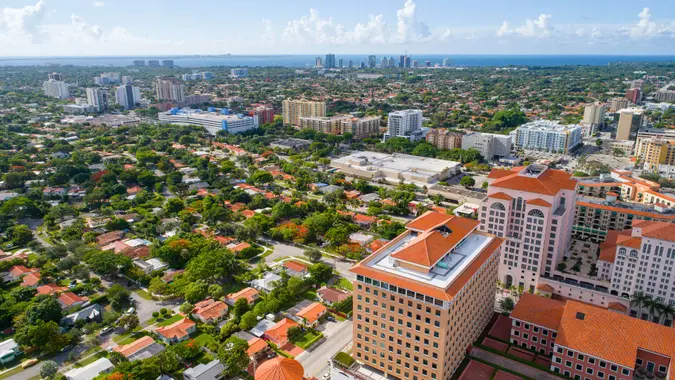Food Stamps: 4 Major Changes to SNAP in 2025

Commitment to Our Readers
GOBankingRates' editorial team is committed to bringing you unbiased reviews and information. We use data-driven methodologies to evaluate financial products and services - our reviews and ratings are not influenced by advertisers. You can read more about our editorial guidelines and our products and services review methodology.

20 Years
Helping You Live Richer

Reviewed
by Experts

Trusted by
Millions of Readers
SNAP, the Supplemental Nutrition Assistance Program, is the largest federal nutrition assistance program. It provides benefits to eligible low-income individuals and families via an Electronic Benefits Transfer (EBT) card.
The U.S. Department of Agriculture (USDA) Food and Nutrition Service (FNS) oversees SNAP, and according to the Center on Budget and Policy Priorities (CBPP), the program improves food security, offers benefits that enable families to purchase healthier diets, and frees up resources that can be used for health-promoting activities and needed medical care.
“SNAP reduces the overall prevalence of food insecurity by as much as 30% and is even more effective among children and those with [children],” the CBPP notes.
The USDA adjusts SNAP maximum allotments, deductions and income eligibility standards at the beginning of each federal fiscal year. The fiscal year for 2025 began on Oct. 1, 2024, and the changes are based on adjustments to the cost of living — the amount of money needed to support a basic standard of living, according to the department.
Here are some of the major changes to SNAP so you can plan accordingly this year.
Eligibility and Age
In order to receive SNAP benefits, there are rules of eligibility based on age. The USDA gradually increases the age of what it calls “able-bodied adults without dependents” (ABAWD) and adds new groups of individuals who are exempt from the ABAWD work requirements.
Last year, ABAWDs aged 18 to 50 had work requirements, which included working at least 80 hours a month, participating in a work program at least 80 hours a month, or participating in a combination of work and work program hours for a total of at least 80 hours a month.
In 2025, these work requirements expanded to age 52, and requirements will expand to age 54 as of October 2024, according to the USDA.
However, there are some exemptions to the ABAWD work requirements. For instance, you are excused if you are unable to work due to a physical or mental limitation, if you are pregnant, if you are a veteran, are homeless, or age 24 or younger and in foster care on your 18th birthday.
Income Eligibility
You are eligible for SNAP benefits if you do not exceed the following gross monthly income limit — 130% of the federal poverty level. If you are applying for SNAP or curious if you have SNAP eligibility, here are a few key takeaways for 2025:
- For fiscal year 2025, the FNS increased maximum allotments and shelter caps for most U.S. states and territories. The COLA (cost-of-living adjustment) allotments came into effect on Oct. 1, 2024.
- The maximum allotments will increase for the 48 states and Washington D.C., Alaska, Guam and the U.S. Virgin Islands.
- The maximum allotment for a family of four in the 48 states and D.C., will be $975, but the maximum allotment for a family of four in Hawaii will decrease to $1,723.
- Maximum allotments for a family of four will range from $1,258 to $1,953 in Alaska.
- The maximum allotment for a family of four will be $1,437 in Guam and $1,254 in the U.S. Virgin Islands.
- The minimum benefit for the 48 states and D.C. will remain the same at $23. The minimum monthly payment in Alaska ranges from $30 to $47, while in Hawaii it is $41.
Maximum Allotments
Though receiving benefits is often based on your net income, which means gross income minus allowable deductions, the amount of SNAP household benefits can vary by location and family size. It’s also important to factor in that the COLA for Social Security and Supplemental Security Income (SSI) benefits was 2.5% in 2025.
Here are the maximum allotments for SNAP in the 48 contiguous states and D.C., according to the USDA website:
- Household size 1: $292
- Household size 2: $536
- Household size 3: $768
- Household size 4: $975
- Household size 5: $1,158
- Household size 6: $1,390
- Household size 7: $1,536
- Household size 8: $1,756
- Each additional person: $220
 Written by
Written by  Edited by
Edited by 

























